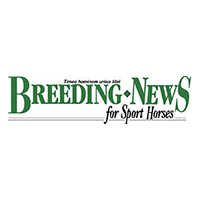By David J. Mellor, Ngaio J. Beausoleil, Katherine E. Littlewood, Andrew N. McLean, Paul D. McGreevy, Bidda Jones, Cristina Wilkins
Animal welfare has been a recurring theme, with various stakeholders in the sport horse breeding industry voicing their concerns in recent years. Questions about soundness and competitive longevity are just two issues raised in our November 2021 issue by HRH Princess Benedikte of Denmark, patron of the WBFSH. While the article published hereunder encompasses a panoply of animals, we deemed it to be of sufficient importance to publish in its entirety, rather than extracts that could be considered horse relation, but would be confusingly out of context.
This review outlines the latest in a succession of updates of the Five Domains Model, which, at each stage, incorporated contemporary verified scientific thinking of relevance to animal welfare assessment. The current update includes, within the structure of the Model, specific guidance on how to evaluate the negative and/or positive impacts of human behaviour on animal welfare. Persons whose actions may be evaluated include, but are not limited to, livestock handlers, owners of draught animals, veterinary care staff, pound/shelter staff, zoo-keepers, wildlife managers, hunters, researchers, companion animal owners, owners of sport/recreational animals, animal trainers, and service animal handlers. (The areas relating specifically to breeding and equestrian sport have been highlighted in bold.)
Situations where human-animal interactions may have negative welfare impacts include: when animals have had little or no prior human contact, when human presence adds to already threatening circumstances, when human actions are directly unpleasant, threatening and/or noxious, when humans’ prior actions are remembered as being aversive or noxious, and when the actions of bonded humans cause unintended harms.
In contrast, situations where human-animal interactions may have positive welfare impacts include: when the companionable presence of humans provides company and feelings of safety, when humans provide preferred foods, tactile contacts and/or training reinforcements, when humans participate in enjoyable routine activities or in engaging variable activities, when the presence of familiar humans is calming in threatening circumstances and when humans act to end periods of deprivation, inhibition or harm. The explicit delineation within the Model of the potential impacts of human interactions on the welfare of animals enhances the Model’s utility. Additional updates in this latest version are also explained.
Abstract
Throughout its 25-year history, the Five Domains Model for animal welfare assessment has been regularly updated to include at each stage the latest authenticated developments in animal welfare science thinking. The domains of the most up-to-date Model described here are: 1 Nutrition, 2 Physical Environment, 3 Health, 4 Behavioural Interactions and 5 Mental State. The first four domains focus attention on factors that give rise to specific negative or positive subjective experiences which contribute to the animal’s mental state, as evaluated in Domain 5. More specifically, the first three domains focus mainly on factors that disturb or disrupt particular features of the body’s internal stability. Each disturbed or disrupted feature generates sensory inputs which are processed by the brain to form specific negative affects, and these affects are associated with behaviours that act to restore the body’s internal stability... To read the complete article you need to be a subscriber
CLICK HERE TO SUBSCRIBE TO BREEDING NEWS
SUBSCRIBERS CAN READ THE COMPLETE ARTICLE BY LOGGING IN AND RETURNING TO THIS PAGE





